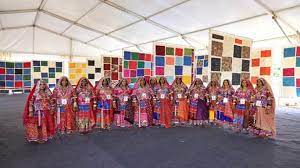Today’s Current Affairs: 12th Jul 2023 for UPSC IAS exams, State PSC exams, SSC CGL, State SSC, RRB, Railways, Banking Exam & IBPS, etc
Table of Contents
Project-75I : Agreement

Spanish submarine manufacturer Navantia and India’s Larsen and Toubro (L&T) recently concluded a Teaming Agreement, to jointly bid for theProject-75I.
- Under this, the Indian Navy will procure six advanced conventional submarines processed through the Strategic Partnership (SP) model.
- These will be diesel-electric submarines, having advanced Air-independent propulsion (AIP) systems.
- Project 75I requires an Indian bidder to tie up with a foreign collaborator and build six conventional submarines equipped with AIP systems.
- The first submarine must have a minimum of 45% indigenisation, with the indigenous content going up to 60% in the sixth.
Air-independent propulsion (AIP) System:
- With the emergence of submarines, there was a problem finding satisfactory forms of propulsion underwater.
- AIP is mostly implemented as an auxiliary source, with the traditional diesel engine handling surface propulsion.
- Most of these systems generate electricity, which in turn drives an electric motor for propulsion or recharges the boat’s batteries.
- A typical conventional power plant provides 3 megawatts maximum, and an AIP source around 10 percent of that. A nuclear submarine’s propulsion plant is much greater than 20 megawatts.
Brucellosis Disease : Girl From Kerala Gets Affected

A seven-year-old girl from Kerala was recently affected by the contagious Brucellosis disease mostly found in cattle breeds.
- Brucellosis Disease is a bacterial infection that spreads from animals to people.
- It is caused by various Brucella species, which mainly infect cattle, swine, goats, sheep and dogs.
- Worldwide, Brucella melitensis is the most prevalent species causing human brucellosis.
- Brucellosis is found globally and is a reportable disease in most countries. It affects people of all ages and both sexes.
- However, Person-to-person transmission is rare.
- Most commonly, people are infected by eating raw or unpasteurized dairy products.
- Sometimes, the bacteria that cause brucellosis can spread through the air or through direct contact with infected animals.
- Symptoms: Brucellosis typically causes flu-like symptoms, including fever, weakness, malaise and weight loss.
Inclusion Of ‘Kui’ Language In The 8th Schedule:

The Odisha Cabinet recently recommended a proposal for inclusion of ‘Kui’ language in the 8th Schedule of the Indian Constitution.
- Kui Language also known as Kandh, Khondi, Khond, Khondo is a South-Eastern Dravidian language spoken by the Kandha community.
- It is primarily spoken in the state of Odisha.
- It is closely related to other languages in the Dravidian family, such as Gondi and Kuvi. It was also referred to as the Kuinga language during the historical period.
- With 941,988 registered native speakers, it figures at rank 29 in the 1991 Indian census.
- Kui is traditionally written using the Odia script, which is also used for writing the Odia language.
8th Schedule of the Indian Constitution:
- It lists the official languages of India.
- Although there are hundreds of languages spoken across the country, the eighth schedule recognises a total of 22 languages as the official languages.
- The 22 languages now included in the eighth section of the Constitution are, Manipuri, Maithili, Kashmiri, Hindi, Kannada, Gujarati, Konkani, Malayalam, Assamese, Marathi, Nepali, Bengali, Punjabi, Sanskrit, Sindhi, Telugu, Tamil, Odia, Urdu, Bodo, Dogri, and Santhali.
- Fourteen of these languages were originally listed in the Constitution. Sindhi was introduced in 1967, Konkani, Manipuri, and Nepali in 1992, and Santali, Dogri, Maithili, and Bodo by the 92nd Amendment Act of 2003.
Shelf Cloud : Recently Appeared In Uttarakhand’s Haridwar

A terrifying shelf cloud recently appeared in Uttarakhand’s Haridwar.
- A “shelf cloud” or “Arcus cloud” generally forms along the leading edge of thunderstorms.
- It is a type of low-lying, horizontal cloud formation characterized by a clearly defined line of solid clouds.
- It is known for its distinctive wedge-shaped formation. They usually appear as a broad arc across the sky that can sometimes appear to be rotating horizontally.
- Shelf clouds form when cold and dense air is forced into a warmer air mass by wind.
- This rush of cold air often occurs in a thunderstorm’s downdraught, where cold air rushes towards the ground before spreading out to create a gust front.
- Shelf clouds produced by thunderstorms are always preceded by a rush of dry and cold air ahead of the cloud, with rain arriving after the shelf cloud has passed overhead.
Urban 20 Summit:

The two-day Urban 20 Mayoral Summit which was hosted by the chair city Ahmedabad, in Gandhinagar from 7-8 July, concluded with the handover of the Communiqué from the Mayors to G20 leaders.
- Urban 20 (U20) Summit is a city diplomacy initiative launched on December 12, 2017, at the One Planet Summit in Paris.
- It provides a platform for cities from G20 countries to facilitate discussions on various important issues of urban development including climate change, social inclusion, sustainable mobility, and affordable housing, and propose collective solutions.
- C40 Cities (C40) and United Cities and Local Governments (UCLG) convene the U20 under the leadership of a Chair city that rotates annually, based in the G20 host country.
- This year it was chaired by the City of Ahmedabad.
- The Communique was officially endorsed by 105 cities across the world, the highest ever number of endorsements received to date for any U20 Communiqué, and more than twice the number of endorsements for any previous communiqués.
- The Communiqué has been drafted as an action agenda for the six priorities identified collectively by U20 cities which include;
- Encouraging environmentally responsible behaviours, accelerating climate finance, championing local culture and economy, ensuring water security, catalysing digital urban futures, and reinventing frameworks for urban planning and governance.
Largest Display Of Lambani Items : Guinness World Record

As part of the third G20 culture working group (CWG) meeting in Hampi, a Guinness world record was created for the ‘largest display of Lambani items.
- Over 450 women artisans and cultural practitioners from Lambani community inhabiting Karnataka came together to create embroidered patches with Sandur Lambani embroidery, creating 1,755 patchwork pieces.
- The Lambani embroidery is an intricate form of textile embellishment characterised by colourful threads, mirror-work and stitch patterns.
- It is practised in several villages of Karnataka such as Sandur, Keri Tanda, Mariyammanahalli, Kadirampur etc.
- The Lambani craft tradition involves stitching together small pieces of discarded fabric to create a beautiful fabric.
- This embroidery had also found a place in the list of products with Geographic Indication (GI) tag in the country.
- The Lambanis are also known as Banjaras and most of them are found in Telangana, Andhra Pradesh and Karnataka states in South India.
First Live Culture Of Candida Auris:

Scientists from Delhi University and McMaster University in Canada have made a significant discovery by isolating and studying the first live culture of Candida auris from the ear canals of stray dogs in Delhi.
- Candida auris is a multi-drug resistant fungus that is capable of causing invasive infections in the human body.
- It was first identified in Japan in 2009
- The fungus has been reported in more than 40 countries, including the United States, United Kingdom, South Africa, and Australia.
- It is primarily contracted in healthcare settings such as hospitals and nursing homes.
- It is generally thought to be spread through contact with contaminated surfaces or by person-to-person transmission.
- The fungus can either colonize a specific region of the body, such as the skin, rectum, or mouth, without causing symptoms or it can cause severe invasive infections by entering the bloodstream or wounds.
- Its symptoms are often similar to those of other common diseases, such as fever and chills that do not go away after treatment with antibiotics.
- It is resistance to multiple classes of antifungal drugs.
- This makes treatment challenging and often requires the use of combination therapies.
Guillain-Barré Syndrome : Peru Has Declared a State Of National Emergency

Peru has declared a state of national emergency amid a surge in patient suffering from Guillain-Barré syndrome.
- Guillain-Barre syndrome is a rare autoimmune disorder where the body’s immune system mistakenly attacks the peripheral nerves.
- It is more common in adults and males, but it can affect people of all ages.
- The first symptoms of Guillain-Barré syndrome include weakness or tingling sensations. They usually start in the legs, and can spread to the arms and face.
- For some people, these symptoms can lead to paralysis of the legs, arms, or muscles in the face.
- It is often preceded by an infection.
- This could be a bacterial or viral infection.
- The most frequently associated infections include Campylobacter jejuni, Epstein-Barr virus (EBV), cytomegalovirus (CMV), and the bacteria responsible for pneumonia and urinary tract infections.
- It may also be triggered by vaccine administration or surgery.
- There is no known cure for this syndrome.
- The most commonly used treatment is intravenous immunoglobulin (IVIG), which is made from donated blood that contains healthy antibodies.
World Population Day 2023 : Theme

World Population Day is observed on July 11th every year to raise awareness about global population issues and the importance of reproductive health and rights.
- It was established by the United Nations in 1989.
- The history of World Population Day dates back to July 11, 1987, when the global population reached a significant milestone of five billion people.
- This event served as a catalyst for recognising the need to address population-related concerns such as poverty, health, education, and sustainability.
- Theme for World Population Day 2023 is “Unleashing the power of gender equality: Uplifting the voices of women and girls to unlock our world’s infinite possibilities.”
Champions Group Of The Global Crisis Response Group:

India has accepted an invitation from United Nations Secretary-General António Guterres to join the Champions Group of the Global Crisis Response Group (GCRG).
- The GCRG was established (in 2022) by the UN Secretary-General to address urgent global issues related to food security, energy, and finance, and to coordinate a global response.
- It is overseen by the Champions Group consisting of heads of state or government from Bangladesh, Barbados, Denmark, Germany, Indonesia, and Senegal.
- India’s decision to join the group signifies its growing global leadership and commitment to addressing contemporary global challenges.
- India’s participation will enhance the United Nations’ efforts in finding effective solutions for developmental issues that affect the world, particularly developing countries.
Nari Adalats : Unique Initative

The Indian government is launching a unique initiative to establish women courts (known as Nari Adalats) at the village level as an alternative dispute resolution forum for issues such as domestic violence and property rights.
- The pilot project will start in 50 villages each in Assam and Jammu and Kashmir in August and will later be expanded to the rest of the country.
- The Nari Adalat of each village would have 7-9 members half of which would be the elected members of the gram panchayat and the other half women with social standing like teachers, doctors and social workers – who would be nominated by the villagers.
- The head of Nari Adalat called the Mukhya Nyaya Sakhi[chief legal friend] will be chosen among the Nyay Sakhis.
- The tenure of the head will be generally six months after which a new one will be selected.
- The courts aim to address individual cases, raise awareness about social schemes, and provide accessible and affordable justice through alternate dispute resolution, counselling, and grievance redressal.
- The initiative is part of the Sambal sub-scheme of Mission Shakti (Ministry of Women and Child Development), which focuses on strengthening women’s safety, security, and empowerment.
- The scheme draws inspiration from the Parivarik Mahila Lok Adalats, which were run by the National Commission for Women until 2014-15 and addressed family and matrimonial disputes.
- It is Collaboration between the Ministry of Women and Child Development, Ministry of Panchayati Raj, Ministry of Rural Development and Common Service Centers operated by the Ministry of Electronics and Information Technology.
What Is Cluster Munition?

United States (US) has made the decision to provide cluster munitions to Ukraine as part of a new military aid package worth up to USD 800 million.
- This move has raised concerns about civilian casualties, with calls from the United Nations to avoid using such weapons.
- A cluster munition is a form of air-dropped or ground-launched explosive weapon that releases or ejects smaller submunitions, commonly known as bomblets, over a wide area.
- They are designed to kill personnel and destroy vehicles, runways, power lines, or other targets.
- Some cluster munitions can also disperse chemical or biological agents, land mines, or leaflets.
- Cluster munitions can indiscriminately harm civilians and civilian objects, violating international humanitarian law.
- They have a high failure rate, leaving behind unexploded ordnance that poses ongoing danger.
- Additionally, they contaminate vast areas for extended periods, rendering them unfit for human use and burdening healthcare and economies in affected nations.
- Convention on Cluster Munitions outlaws the use, production, transfer, and stockpiling of these weapons due to their indiscriminate and long-lasting effects on civilian populations.
- It was adopted in Dublin by 107 States on 30 May 2008 and signed in Oslo on 3 December2008.
- The Convention became binding international law when it entered into force on 1 August 2010.
- To date, a total of 123 States have joined the Convention: 111 States Parties and 12 Signatories.
- The convention remains unsigned by several nations, including India, the United States, Russia, Ukraine, Pakistan and Israel.




